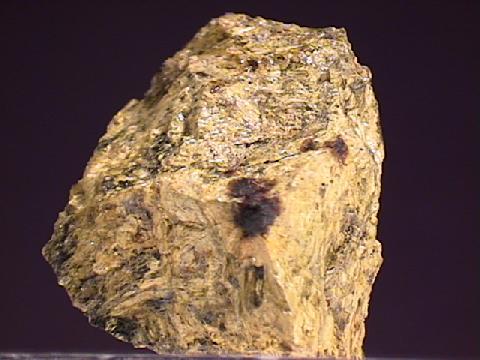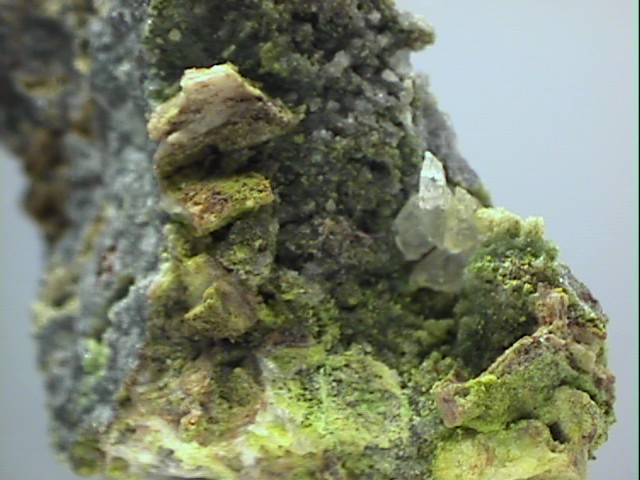 THE
MINERAL BINDHEIMITE
THE
MINERAL BINDHEIMITE
- Chemical Formula: Pb2Sb2O6(O, OH), Lead Antimony Oxide Hydroxide.
- Class: Oxides and Hydroxides
- Uses: A very minor ore of lead and antimony and as mineral specimens.
Specimens
Bindheimite is an alteration product, or more specifically an oxidation product of lead antimony sulfides such as jamesonite, Pb4FeSb6S14 and boulangerite, Pb5Sb4S11. Sometimes it pseudomorphs these minerals meaning that it replaces them without to much distortion of the outward appearance of the crystals. More commonly, bindeimite replaces these minerals with cryptocrystalline indistinct masses or crusts.
PHYSICAL CHARACTERISTICS:
- Color is yellow to red-brown or greenish to white.
- Luster is resinous to earthy.
- Transparency: Crystals are opaque.
- Crystal System is isometric.
- Crystal Habits include pseudomorphs of lead antimony sulfides, but more commonly cryptocrystalline masses or crusts.
- Cleavage is not discernible.
- Fracture is earthy.
- Hardness is 4 - 4.5.
- Specific Gravity is approximately 7.3 - 7.5 (heavier than average) when pure but lowers with hydration to around 4.6.
- Streak is pale yellow to brown.
- Associated Minerals include stibiconite,
tetrahedrite,
partzite ,lewisite , cerussite and other lead and/or antimony minerals. - Notable Occurrences include Nerchinsk, Siberia, Russia; Bolivia; Australia; England; Cochise and Pima Counties, Arizona; Black Hills, South Dakota and San Bernardino County, California USA.
- Best Field Indicators are crystal habit, color, associations and luster.





